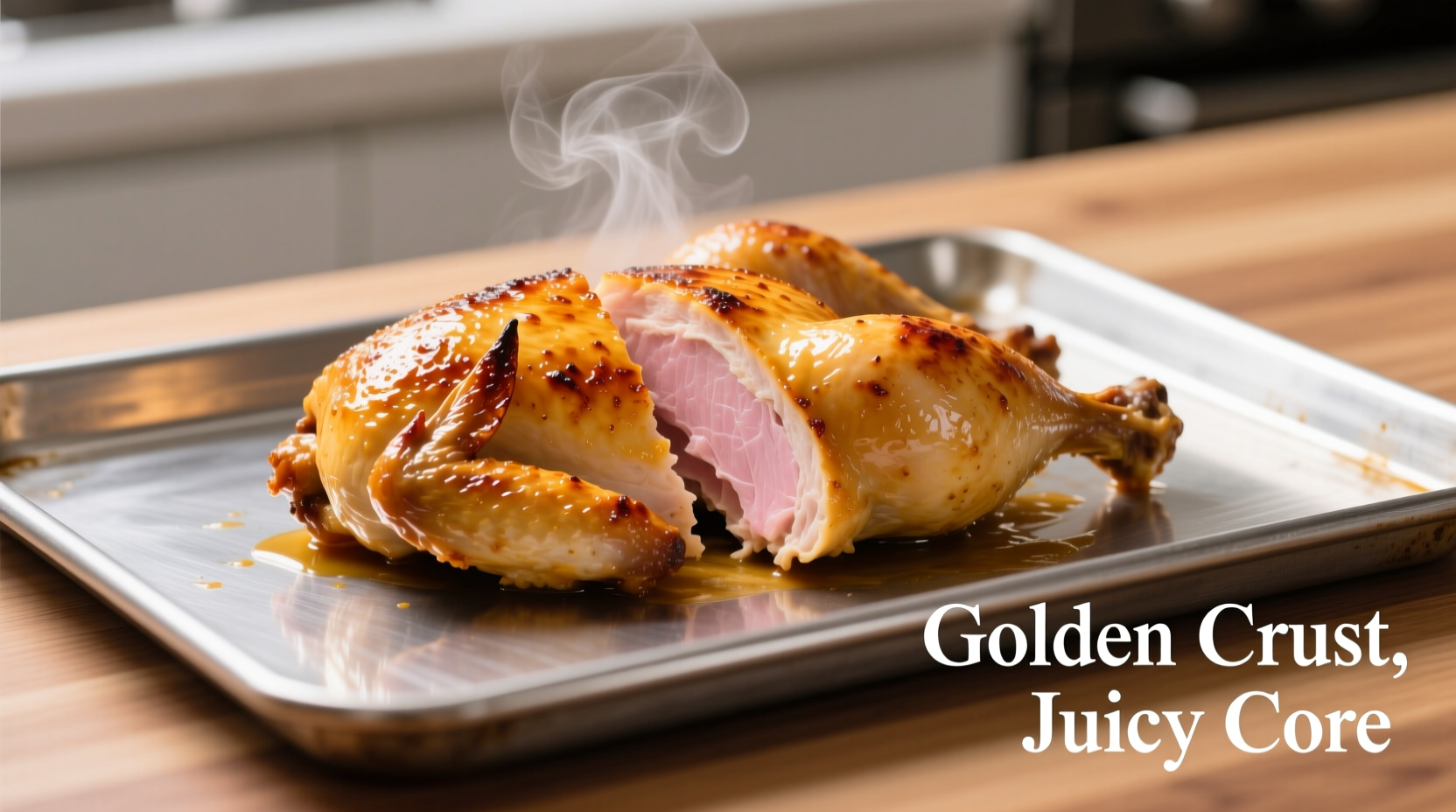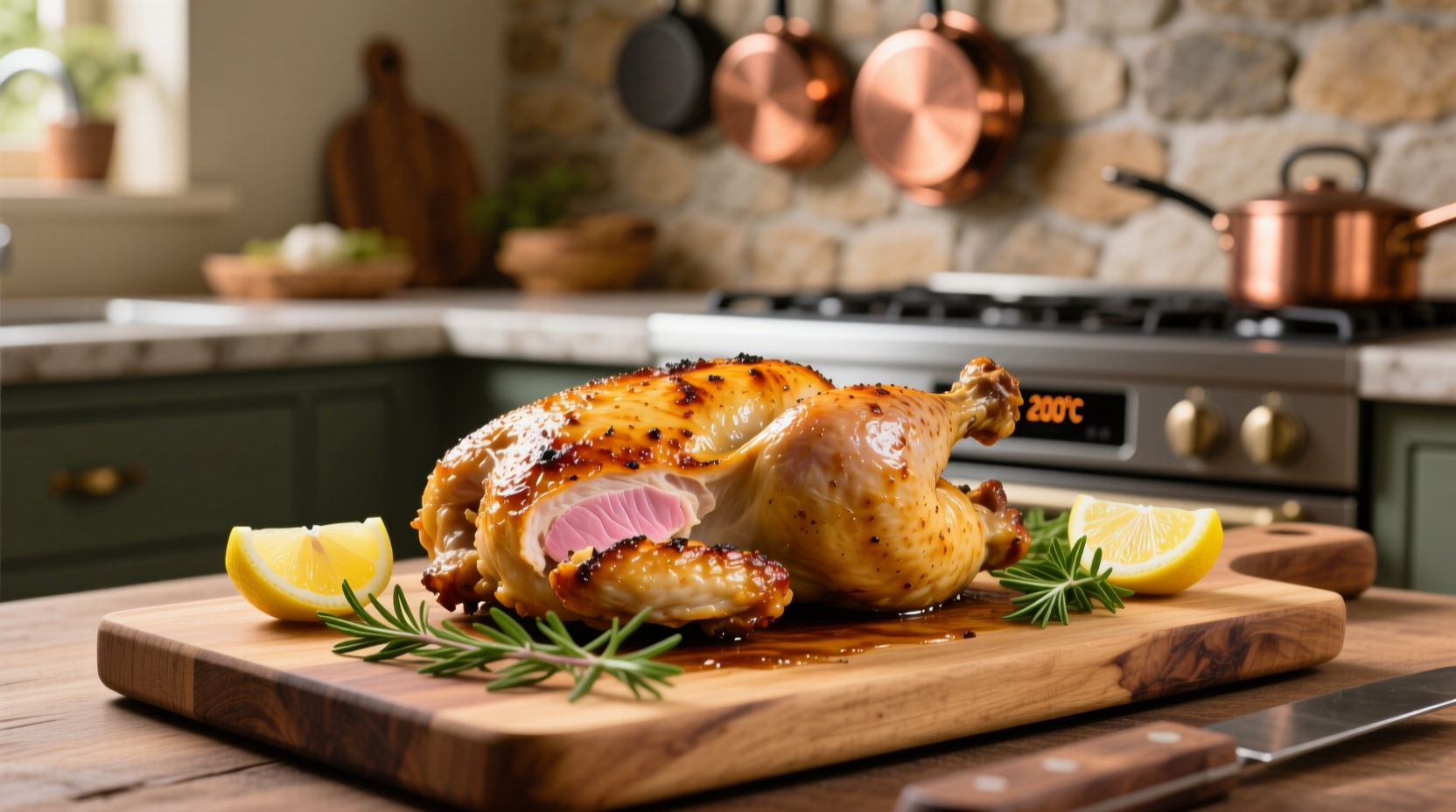The ideal cooking time for chicken breast in the oven is 20-30 minutes at 375°F (190°C), but this varies based on thickness, starting temperature, and oven accuracy. Always verify doneness with a meat thermometer — chicken breast is safely cooked when it reaches 165°F (74°C) internal temperature. Undercooked chicken poses serious food safety risks, while overcooked chicken becomes dry and tough.
Why Proper Chicken Breast Cooking Time Matters
Getting the cooking time right for chicken breast isn't just about taste — it's a critical food safety issue. According to the USDA Food Safety and Inspection Service, poultry must reach 165°F (74°C) to eliminate harmful bacteria like salmonella and campylobacter. This precise temperature kills pathogens while preserving moisture. Many home cooks rely solely on cooking time without checking internal temperature, which leads to either unsafe undercooked chicken or dry, overcooked results.
The Science Behind Perfectly Cooked Chicken
Chicken breast contains lean protein that begins to denature at 140°F (60°C) and fully sets around 165°F (74°C). Cooking beyond this point causes excessive moisture loss through protein contraction. The ideal window is narrow: just 5°F (3°C) between perfectly cooked and dry chicken. Factors affecting cooking time include:
- Thickness (most critical factor)
- Starting temperature (chilled vs. room temperature)
- Oven accuracy (many home ovens vary by ±25°F)
- Pan type (dark metal vs. glass)
- Whether chicken is covered or uncovered
Standard Cooking Times by Temperature
| Oven Temperature | Thin Breasts (4-6 oz) | Standard Breasts (6-8 oz) | Thick Breasts (8-10+ oz) |
|---|---|---|---|
| 350°F (177°C) | 18-22 minutes | 22-26 minutes | 28-35 minutes |
| 375°F (190°C) | 16-20 minutes | 20-25 minutes | 25-30 minutes |
| 400°F (204°C) | 14-18 minutes | 18-22 minutes | 22-26 minutes |
| 425°F (218°C) | 12-15 minutes | 15-18 minutes | 18-22 minutes |
These times assume chicken is placed on a rack in the center of the oven. Bone-in breasts require 5-10 minutes longer. Always remember these are estimates — the only reliable method is checking internal temperature.
How to Verify Chicken Is Properly Cooked
While cooking time provides a guideline, multiple verification methods ensure perfect results:
1. Digital Meat Thermometer (Most Reliable)
Insert into the thickest part, avoiding bone. The USDA Food Safety and Inspection Service confirms chicken is safe at 165°F (74°C). For juicier results, remove at 160°F (71°C) — residual heat will carry it to 165°F during resting.
2. Visual Indicators
Properly cooked chicken breast should be white throughout with no pink areas. The juices should run clear, not pink or red. Note: Visual checks alone aren't sufficient for food safety.
3. Texture Test
Gently press the chicken. Properly cooked breast will feel firm but yield slightly. Overcooked chicken becomes very firm and dry.

Avoid These Common Cooking Mistakes
Based on analysis of cooking forums and culinary expert recommendations, these errors frequently ruin oven-baked chicken:
- Not accounting for carryover cooking — chicken continues cooking after removal from oven (5-10°F increase)
- Skipping the resting period — always rest 5-10 minutes to redistribute juices
- Cooking straight from refrigerator — let chicken sit at room temperature 20-30 minutes first
- Overcrowding the pan — prevents proper air circulation and browning
- Relying solely on cooking time — thickness variations make time-only approaches unreliable
Pro Tips for Juicy, Flavorful Oven-Baked Chicken
Professional chefs use these techniques to elevate basic oven-baked chicken:
- Dry brine — salt chicken 1-24 hours before cooking for better moisture retention
- Butterfly thick breasts — creates even thickness for consistent cooking
- Use a baking rack — promotes air circulation for even cooking on all sides
- Finish under broiler — 1-2 minutes for perfect browning without overcooking
- Oil before seasoning — helps spices adhere and creates better crust
Troubleshooting Your Oven-Baked Chicken
Encountering issues? Try these solutions:
- Dry chicken — Cooked too long or at too high temperature. Try lower heat (350°F) with longer time.
- Pink areas near bone — Bone can insulate surrounding meat. Verify with thermometer — if 165°F, it's safe.
- Uneven cooking — Butterfly thick portions or rotate pan halfway through cooking.
- Burning on bottom — Use middle oven rack position and consider double-panning.
- Not browning — Pat chicken very dry before cooking and increase oven temperature for last 5 minutes.
How Oven Type Affects Cooking Time
Not all ovens perform equally. Convection ovens circulate hot air, reducing cooking time by approximately 25% compared to conventional ovens. When using convection:
- Reduce temperature by 25°F
- Check for doneness 5-7 minutes earlier than conventional oven times
- Position chicken on middle rack for even air circulation
Gas ovens often have more moisture in the environment, which can slightly extend cooking time compared to electric ovens. Always use an oven thermometer to verify actual temperature — studies show many home ovens vary by ±25°F from the set temperature.
Perfecting Your Chicken Breast Cooking Process
Mastering oven-baked chicken breast requires understanding the relationship between time, temperature, and thickness. Start with these steps for consistent results:
- Bring chicken to near room temperature (20-30 minutes out of fridge)
- Dry thoroughly with paper towels
- Season and optionally dry brine
- Preheat oven to desired temperature (375°F recommended for beginners)
- Place on baking rack in center of oven
- Check internal temperature 5 minutes before expected finish time
- Remove at 160°F (71°C) for carryover cooking to 165°F (74°C)
- Rest 5-10 minutes before slicing
Frequently Asked Questions
How long to cook 1-inch thick chicken breast at 400°F?
A 1-inch thick chicken breast typically needs 18-22 minutes at 400°F. Always verify with a meat thermometer — it should read 165°F (74°C) in the thickest part. Thicker pieces may require up to 25 minutes.
Should I cover chicken breast when baking in the oven?
Covering chicken breast creates steam, which can prevent proper browning but helps retain moisture. For most recipes, leave uncovered for better texture. If concerned about drying, cover with foil only during the last third of cooking time.
How long should chicken breast rest after baking?
Rest chicken breast for 5-10 minutes after removing from the oven. This allows juices to redistribute throughout the meat. Cutting too soon causes juices to escape, resulting in drier chicken. Tent loosely with foil during resting.
Can I cook frozen chicken breast in the oven?
Yes, but increase cooking time by 50% and check temperature frequently. Frozen chicken breast at 375°F typically needs 35-45 minutes. The USDA recommends cooking frozen chicken at 350°F to ensure even cooking without burning the exterior.
Why is my oven-baked chicken breast still pink?
Pink color near bones can occur even when chicken reaches safe temperature (165°F). This happens because bone marrow pigment seeps into surrounding meat. Always verify with a thermometer — if it reads 165°F, the chicken is safe to eat regardless of color.











 浙公网安备
33010002000092号
浙公网安备
33010002000092号 浙B2-20120091-4
浙B2-20120091-4